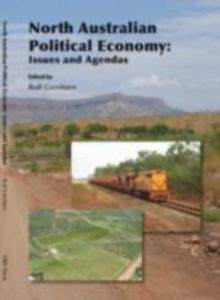Bridging the asymmetric divide: background to, and strategies for bridging the divide between Indigenous and non-Indigenous economies in northern Australia
Stoeckl, Natalie (2010) Bridging the asymmetric divide: background to, and strategies for bridging the divide between Indigenous and non-Indigenous economies in northern Australia. In: Gerritsen, Rolf, (ed.) North Australian Political Economy: issues and agendas. Charles Darwin University, Darwin, Australia, pp. 106-129.
![[img]](https://researchonline.jcu.edu.au/15873/9.hassmallThumbnailVersion/15873_Stoeckl_2010_Book_Cover.jpg)
|
Image (JPEG) (Book Cover)
- Cover Image
Download (7kB) |
|
|
PDF (Published Version)
- Published Version
Restricted to Repository staff only |
Abstract
[Extract] This first part of this chapter describes an input-output model that was built to analyse the economic interactions between Indigenous and non-Indigenous economies in northern Australia. Focused on two river catchments, it uses the custom-built models to 'simulate' different types of development (e.g. an increase in demand for agricultural products), making predictions about the likely changes to Indigenous and non-Indigenous incomes that would subsequently occur. The simulations suggest that Indigenous and non-Indigenous economic systems are divided. This divide is both profound and asymmetric: an increase in Indigenous incomes will also increase the incomes of non-Indigenous householders, yet very little money that is injected into the non-Indigenous economic system ever finds its way into the Indigenous one.
The policy implication of this is that strategies which increase the quantity of goods and services that are produced in Australia's north (without changing the way in which these goods are produced) will, most likely, merely serve to benefit non-Indigenous householders. To improve the incomes of Indigenous people living in this part of the country may require structural change—altering the way in which goods and services are produced. The chapter suggests structural changes for the northern Australian economies that have the potential to benefit Indigenous householders. These include the development of new enterprises that are either horizontally or vertically integrated with other viable businesses, the encouragement of co-owned businesses, and positive discrimination in the labour market.
| Item ID: | 15873 |
|---|---|
| Item Type: | Book Chapter (Research - B1) |
| ISBN: | 978-0-9808641-0-6 |
| Date Deposited: | 20 Apr 2011 03:07 |
| FoR Codes: | 14 ECONOMICS > 1402 Applied Economics > 140218 Urban and Regional Economics @ 50% 14 ECONOMICS > 1402 Applied Economics > 140202 Economic Development and Growth @ 50% |
| SEO Codes: | 91 ECONOMIC FRAMEWORK > 9199 Other Economic Framework > 919999 Economic Framework not elsewhere classified @ 25% 91 ECONOMIC FRAMEWORK > 9101 Macroeconomics > 910106 Income Distribution @ 75% |
| Downloads: |
Total: 78 Last 12 Months: 4 |
| More Statistics |



